 Everyone I know loves a good “dumb criminal” story. In fact, I can’t go a day without someone (store managers, district managers, executives, family…) asking me to tell a crazy shoplifting story. I have a top 10 list that I usually gravitate towards, but after yesterday, I may have to change it to a top 11.
Everyone I know loves a good “dumb criminal” story. In fact, I can’t go a day without someone (store managers, district managers, executives, family…) asking me to tell a crazy shoplifting story. I have a top 10 list that I usually gravitate towards, but after yesterday, I may have to change it to a top 11.
It was about 7pm and I was finally leaving my office (my office in a store). In order to get to the front door, I have to walk right down the middle of the highest theft area of the store; footwear. Most days, I put my blinders on and try to bee-line to the door, but on this day… well she just caught my eye. No, it wasn’t the girl of my dreams…
As I’m walking down the main walkway, out of the corner of my eye I catch a glimpse of this woman placing a pair of shoes in her purse. Let me build you a mental picture for just a moment. This was a large woman; think Oprah Winfrey in The Color Purple big. And tall. She had to be pushing 6ft3in. She was wearing a dark green pajama dress, with slippers and curlers in her hair. I did not want to confront her; I was, in fact, a little scared. ☺
I radio for one of the store’s agents, but as luck would have it, they’ve left early for the day. It’s just me and the jolly green giant. I had a decision to make; I could go through and make the apprehension, or try and recover the product that she had concealed. To heck with it, let’s have a little fun. So I continued observation and watched as she methodically placed about a dozen or so pairs of shoes in her purse. She then began her slow walk towards the front of the store. Not having an agent in the store, I grabbed one of the managers, who just happened to be former LP. I knew she wouldn’t mind getting in on the action.
As Ms. Banner made her exit, I (scared that she may break me in half) approached her and identified myself as LP. The reaction was just as I thought it would be. She proceeds to a verbal assault that would make reading me the riot act look like poetry. At the very least, I want to recover my merchandise (and hopefully keep my bones in one piece). I reach towards the basket and grab the purse with my product inside. She, quicker that I thought she could move, races around the shopping cart and tries to remove it from my hands. After all, it is her purse… who cares if it contains MY merchandise?
Before she could get it from me, I quarterback hiked it to the manager, who didn’t miss a beat and caught it mid-flight. The manager then tossed it into the storage closet that happened to be open and slammed the door shut. (It locks automatically.) Hulk didn’t think that was funny and flipped the shopping cart over on its side and commenced to beating the door. For a minute there, I thought she’d be able to make it in. She overheard me desperately pleading with dispatch to get me an officer ASAP and she took off through the parking lot. I have to say, it was quite amusing to watch a woman of her stature running through the parking lot in slippers.
She actually was able to flee the store before the police arrived and I first was pretty upset that after all that I went through, I didn’t have her identity. At least I had my product back, right? The officer finally shows up a little later and takes my report. I take him inside to photograph the purse and the stolen product. After I pulled 13 pairs of shoes out, I noticed there was a large wallet at the bottom. Inside was her state ID, driver’s license, library card and several credit cards all with her name on them. I promptly signed a warrant for her arrest.
Would you believe that the next day, she called the store manager and told her that she had “lost” her wallet while shopping in the store? The store manager, unaware of what happened, transferred the call to me. She had no idea she was talking to the guy she almost broke in half and I actually convinced her that the wallet had been turned in to the lost and found and that she could come on by and pick it up. She did. As soon as she stepped foot in the store, she was promptly arrested by two of the counties’ finest.
 In the UK the number of women apprehended for shoplifting has increased, and has been linked to the fact that they do no longer get government benefits. In the United States shoplifting has increased with millions of dollars lost due to shoplifting every year, and the increase in prices has led many thieves to shoplift items that were unthinkable not too long ago. With the increase of beef prices for example, the number of thieves stealing package meat has reached an all time high. Stores across the country are even considering putting anti-theft packaging on their meat products to prevent thieves from shoplifting it.
In the UK the number of women apprehended for shoplifting has increased, and has been linked to the fact that they do no longer get government benefits. In the United States shoplifting has increased with millions of dollars lost due to shoplifting every year, and the increase in prices has led many thieves to shoplift items that were unthinkable not too long ago. With the increase of beef prices for example, the number of thieves stealing package meat has reached an all time high. Stores across the country are even considering putting anti-theft packaging on their meat products to prevent thieves from shoplifting it.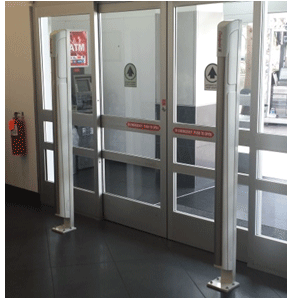
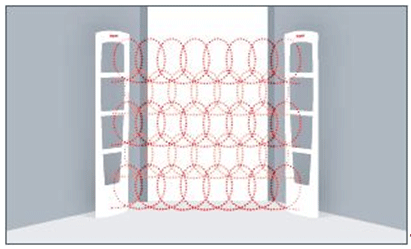 Tagged merchandise, metal racks, and electrical wiring in this incidental detection zone can have an adverse effect on system performance. As a general rule, tagged merchandise should be equivalent of at least ¾ of you doorway aisle width away from each EAS pedestal. Example; tags should be no closer than 4.5 feet, in a 6 foot doorway. Where possible: metal racks and electrical wiring should be 5 feet or more away from the system.
Tagged merchandise, metal racks, and electrical wiring in this incidental detection zone can have an adverse effect on system performance. As a general rule, tagged merchandise should be equivalent of at least ¾ of you doorway aisle width away from each EAS pedestal. Example; tags should be no closer than 4.5 feet, in a 6 foot doorway. Where possible: metal racks and electrical wiring should be 5 feet or more away from the system.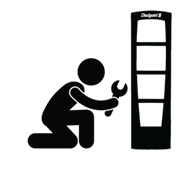
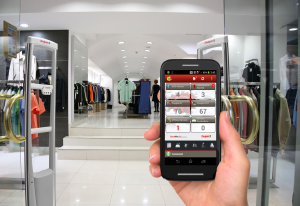 You’ve got a great EAS system. You’re stopping shrink and keeping profits in your store. You’re happy. Losses are down and you might actually make your sales targets. So it’s like Ronco Rotisserie where you just “set it and forget it,” right? Not quite. You have a few things to do if you want that system to provide you years and years of a return on investment.
You’ve got a great EAS system. You’re stopping shrink and keeping profits in your store. You’re happy. Losses are down and you might actually make your sales targets. So it’s like Ronco Rotisserie where you just “set it and forget it,” right? Not quite. You have a few things to do if you want that system to provide you years and years of a return on investment.
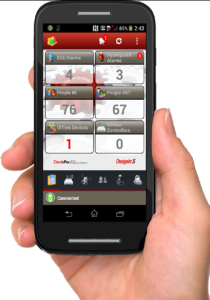

 Burnout is an on-going, serious issue in the retail industry. The industry is so immense and pervasive that all of us, even if we’ve never working in retail, have knowledge of and experience with the problem.
Burnout is an on-going, serious issue in the retail industry. The industry is so immense and pervasive that all of us, even if we’ve never working in retail, have knowledge of and experience with the problem. Ever notice how so many different shoplifters, from various backgrounds and demographics all share similar characteristics in the manner in which they steal, the product that they steal and the methods used to conduct their acts? Well, I did and it really got me thinking. Why was this so? Is there some large underground shoplifting network where this information is swapped amongst the thieving brethren? Kind of.
Ever notice how so many different shoplifters, from various backgrounds and demographics all share similar characteristics in the manner in which they steal, the product that they steal and the methods used to conduct their acts? Well, I did and it really got me thinking. Why was this so? Is there some large underground shoplifting network where this information is swapped amongst the thieving brethren? Kind of.